
Being a driving Instructor and a father I take passion in reviewing products even in the midst of buying, everything has its pros and cons but for me the best convertible car seat for an infant does have to be this one.
When it comes to selecting a convertible car seat for infants, parents are faced with an overwhelming number of choices. Safety, comfort, and longevity are key considerations, but let’s not forget about style and affordability.
Enter the COSATTO Zoomi Car Seat, a standout option that checks all the boxes for modern parents looking for the best for their little ones.
A convertible car seat for infants is a versatile piece of baby gear designed to adapt as your child grows. These seats typically begin as rear facing for infants, then convert to a forward facing car seat, and in some cases, even to a booster seat. The idea is to invest in one seat that evolves with your child, eliminating the need for multiple purchases.
The COSATTO Zoomi Car Seat is not just a car seat; it’s a long-term companion for your growing child. Designed for children from 9 months to 12 years old, it grows with your baby, offering exceptional value for money.
Let’s delve into the features that make this car seat a must have.
If you’re in the market for a convertible car seat for infants, the COSATTO Zoomi is hard to beat. With its impressive safety features, comfort-driven design, and long-lasting durability, it’s a purchase that will grow with your family and save you money in the long run. Plus, its vibrant and stylish designs make it a joy to use daily.
Invest in the COSATTO Zoomi Car Seat and enjoy peace of mind knowing your child is safe, comfortable, and happy on every journey. It’s not just a car seat—it’s a smart investment in your child’s future.
Ready to upgrade your travel experience?
Choose the COSATTO Zoomi Car Seat today and discover why it’s the best convertible car seat for infants on the market.
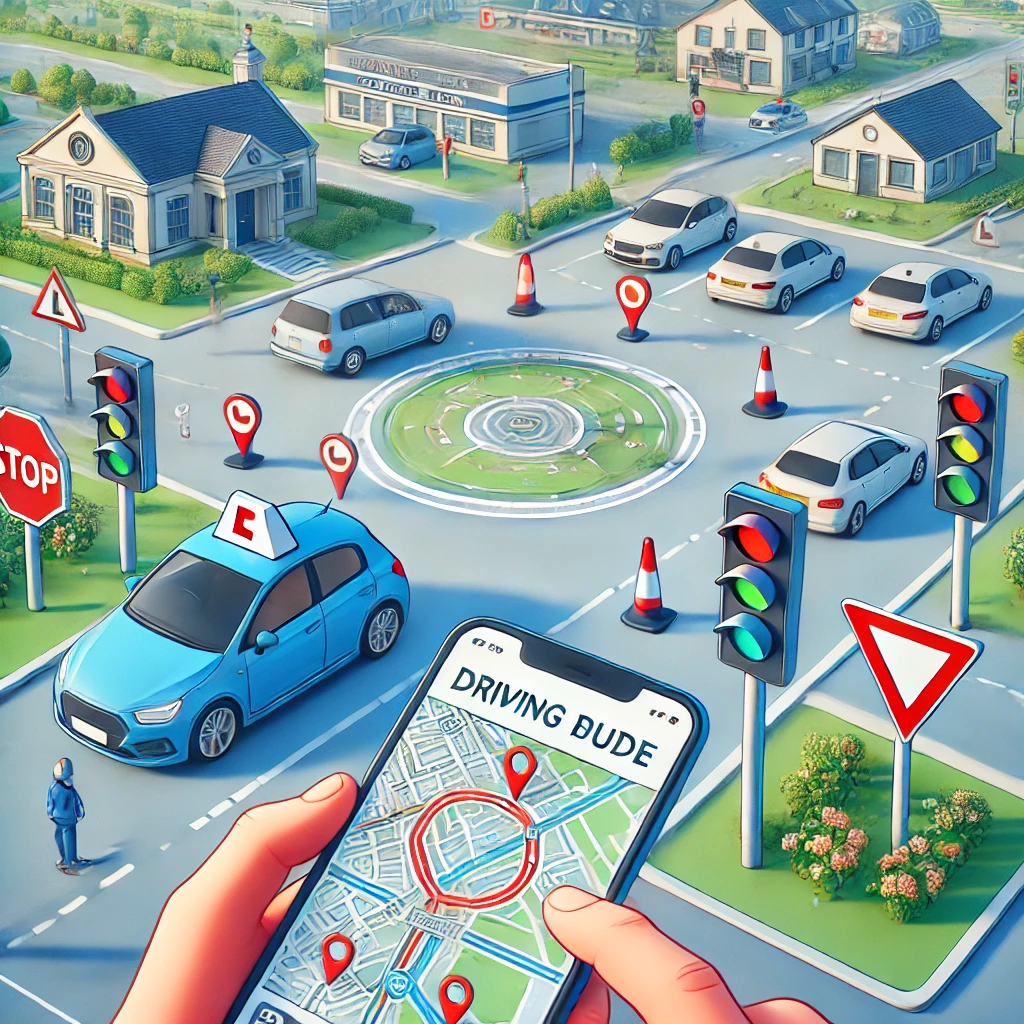
As a driving instructor, one of the most important parts of my job is helping learners feel confident and prepared for their driving test.
A key part of that preparation is familiarizing students with the nearest driving test routes. That’s why I rely on Route Buddy, the ultimate app for navigating driving test routes.
Whether you’re an instructor or a learner, Route Buddy is a game changer that can make all the difference in test success.
Route Buddy is a cutting edge app designed specifically for driving instructors and learners. It provides detailed, reliable information on official driving test routes in your area.
With its intuitive interface and smart features, Route Buddy ensures you’re always one step ahead of the game. Gone are the days of guessing test routes or relying on outdated resources.
With Route Buddy, you have access to the most up-to-date routes at your fingertips.
CLICK HERE TO BUY THE NUMBER DRIVING TEST ROUTES APP
Driving test routes are carefully chosen by examiners to challenge learners with a mix of road types, traffic conditions, and tricky maneuvers. Knowing these routes in advance can significantly reduce anxiety and boost confidence.
As an instructor, I’ve seen firsthand how practicing on these routes improves a learner’s performance. Route Buddy makes it easy to locate the nearest driving test routes and tailor your lessons to cover the most relevant scenarios.

For instructors like me, Route Buddy is an invaluable tool. Here’s why it’s a must-have:
Learners also reap significant advantages from using Route Buddy:
Route Buddy isn’t just another driving app it’s a comprehensive solution designed to make driving test preparation seamless.
With its user-friendly design, real-time updates, and an extensive database of test routes, it’s the go to app for anyone serious about passing their test.
Don’t leave driving test success to chance. Whether you’re an instructor aiming to elevate your lessons or a learner ready to ace the test, Route Buddy is your ultimate partner.
Download Route Buddy today and experience the difference it makes in preparing for the driving test.
With Route Buddy, success is just around the corner literally!
Do you need help answering “Where to practice driving near me?”
Don’t worry.
I’ve got you covered.
As a learner driver, finding the perfect places to practice driving to build confidence and experience is essential.
And I’m not just talking about driving in empty car parks!
In this article, I will share the top locations for learner drivers to practice driving and give you the lowdown on what to expect in each setting.
So fasten your seatbelts and get ready to discover the best places to practice driving near you!
KNOW YOUR LOCAL TEST ROUTES HERE
As a learner driver, it’s important to remember that you need learner driver insurance to drive on the road legally.
This is one of many type of car insurance, but it covers you while you’re learning to drive and protects you and your instructor in case of any accidents.
Not only is it a legal requirement, but it’s also an important safety measure.
Luckily, getting learner driver insurance is easy and affordable, I use Veygo for driving test Insurance
The above link has great deals from across the UK, so you can find a policy that suits your needs and budget.
Don’t take any risks when driving – get learner driver insurance today!
If you already have learner driver insurance, visit my shop page for other recommended products.
I’ve used all of them to ensure they are high quality.
Now, let’s learn about the best places to drive if you’re a learner driver.
Now that your learner driver insurance is sorted, it’s time to start practising driving. But where should you go?
You could drive anywhere from quiet roads to town centres, dual carriageways, and motorways.
Each location has unique challenges and advantages that will help you build up your confidence and experience.
So, let’s check out the pros and cons of each location.
One of the best places to practice driving as a learner is on quiet roads.
These roads are great for building confidence and getting used to the car.
Here are some pros and cons of practising on quiet roads:

The town centre is great for practising driving in more challenging conditions.
With lots of traffic, pedestrians, and other hazards, the town centre offers an opportunity to develop awareness and defensive driving skills.
Here are some pros and cons of practising in town centres:
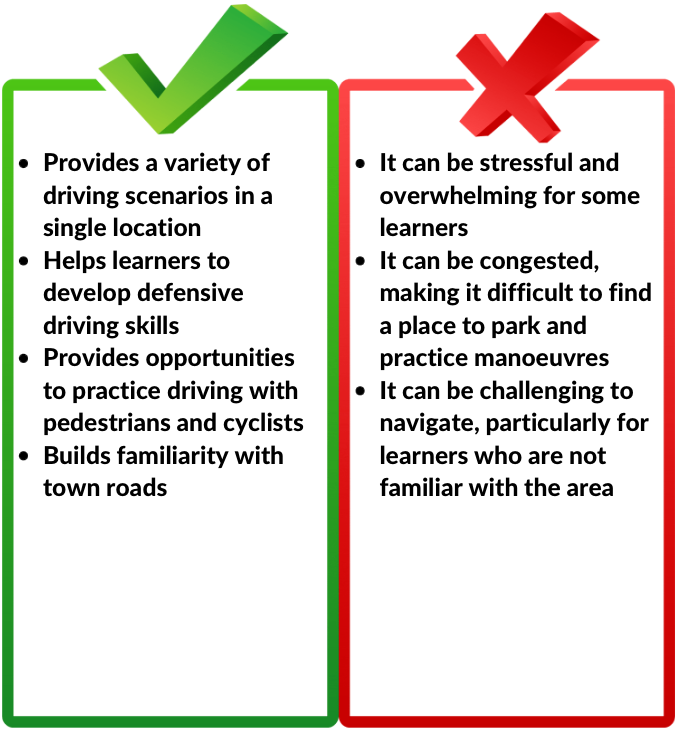
Dual carriageways are an excellent place to practice driving skills at higher speeds.
They offer opportunities to practice overtaking other vehicles and anticipating other drivers’ movements.
Here are some pros and cons of practising on dual carriageways:

The motorway is the fastest type of road, and it can be intimidating for some learners.
However, it’s also an important place to practice driving skills, particularly if you plan to drive long distances or use motorways regularly.
Here are some pros and cons of practising on the motorway:

Car parks are an excellent place to practice driving and parking skills.
They offer a safe and controlled environment for learners to practice manoeuvres and observe pedestrians and other vehicles.
Usually, students across the UK flock to Tesco and Sainsbury’s because of the empty lots.
If you go here for practice, ensure the business allows this.
Sometimes stories have signs prohibiting this, which could lead to a hefty fine!

If you’re learning to drive, use parking lots to practice your parking and reversing skills.
Use cones or markers to simulate real-life parking situations, and don’t be afraid to ask an experienced driver to supervise you.
Remember, practice makes perfect.
Driving in a city can be one of the most challenging experiences for a learner driver. But it’s also a great opportunity to develop your skills in a busy environment.
Unlike quiet roads, the city centre will allow you to develop steel nerves.
But, since the roads are quite busy, you must be prepared for anything that may come your way.
So, I recommend that you get a safety kit for your car.
Usually, these include things like triangles if you break them down.
Another recommendation before heading into the city is to get breakdown cover.
It will keep you safer while learning to drive in a hectic environment.

If you’re learning to drive in a city, start with small, quiet streets before gradually progressing to busy main roads.
Remember to stay alert, anticipate potential hazards, and always follow the rules of the road.
Driving on country roads can be an enjoyable and peaceful experience, but it can also be challenging for learner drivers.
The raids will often twist and turn, and they are quite narrow. You may need to reach speeds of up to 50PMPH.
All the while, you must ensure you are looking ahead while focusing on what’s right before your eyes.
If you want to practice on the country road, the best investment you can make is a SATNAV.
Using a SATNAV, you can see upcoming twists and turns.
It works wonders for helping you know what’s coming up in unknown areas.
I recommend the TOMTOM VIA 52.

If you’re learning to drive on country roads, maintain a safe speed, especially around bends and corners.
Watch for wildlife, and adjust your speed according to the road conditions.
As someone who is learning to drive, you need to practise in a variety of settings.
Each driving situation poses challenges, and practising in diverse settings will aid in developing driving skills and boosting confidence on the road.
Remember always to be alert, stay focused, and follow the rules of the road. Y
You’ll soon become a confident and competent driver with time and practice.
If you’re an American planning to visit or move to the UK, one of the first things you’ll wonder about is your ability to drive. You may be asking yourself, “Is my US driver’s license valid in the UK?”
In this blog post, we’ll explore whether your US license allows you to drive legally in the UK, as well as the key differences in driving rules and habits between the two countries.
By the end, you’ll have a clearer understanding of what you need to consider before hitting the road in the UK and what steps you can take to prepare for a safe driving experience.
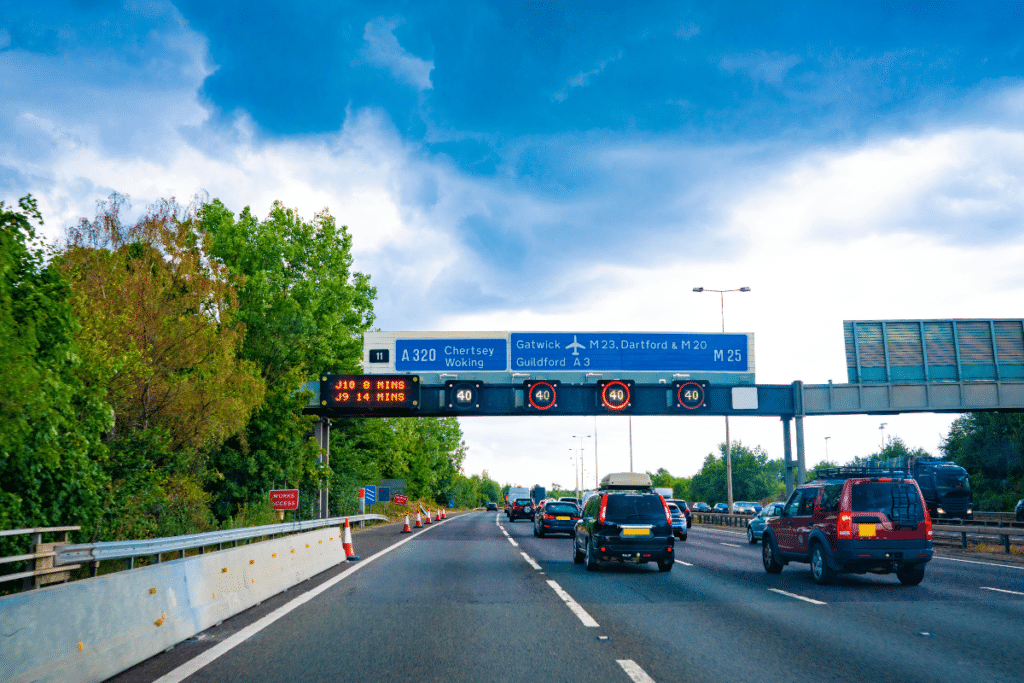
Driving in the UK can be a very different experience compared to driving in the US. While it’s easy to think you can just hop in a car and get going, the rules, driving habits, and even the infrastructure are unique.
Here are the biggest differences that you need to be aware of:
The most obvious and perhaps most daunting difference is that cars drive on the left side of the road in the UK, whereas in the US, they drive on the right. But this change affects more than just where you put the car; it also changes how you navigate intersections and roundabouts.
For example, in the US, when you turn left, you pull into the lane farthest from the corner. However, in the UK, a left turn places you in the closest lane to the curb.
The same adjustment happens when you turn right: in the US, you pull into the lane closest to you, but in the UK, you must cross over and aim for the far lane.
Additionally, your frame of reference will shift. In the US, most drivers use the lines on the right side of the car, opposite the driver’s seat, to stay in their lane.
In the UK, you’ll need to switch that mindset and align with the lane markers on the right side of the car, where the driver sits.
This change in perspective can throw off even seasoned drivers, so it’s essential to practice and remain vigilant while getting used to this new system.

Another significant difference between driving in the US and the UK is the way road signs are presented.
In the US, road signs tend to be explicit, often using words to communicate their meaning. This is convenient because even if you’re unfamiliar with a sign, you can usually figure it out by reading it.
However, in the UK, road signs are much more symbolic and require familiarity with their meanings, as many do not use any words at all.
For example, in the UK, there are many signs you simply must learn by heart. Failure to do so can not only be confusing but also potentially dangerous.
Imagine you’re driving down a road at high speed, see a sign with a black stripe through it, and have no idea what it means.
It turns out this is the UK’s national speed limit sign, indicating that you should adhere to the default speed limits for that type of road.

Some road signs may look familiar but have completely different meanings. For instance, a triangular warning sign with an exclamation mark (!) indicates a general hazard.
In the US, you might expect a more specific description like “Caution: Sharp Turn” or “Warning: Construction Ahead.”
If you’re planning to drive in the UK, you’ll need to familiarize yourself with these road signs to stay safe and avoid confusion.
To emphasize just how dangerous these differences can be, let’s look at the tragic case of Harry Dunn. In 2019, 19-year-old Harry Dunn was riding his motorbike near RAF Croughton when he was hit and killed by a car driven by Anne Sacoolas.
Sacoolas, an American, was driving on the wrong side of the road when her vehicle collided with Dunn’s motorcycle.
The unfortunate accident highlights how driving on the opposite side can have severe consequences.
If you’re not used to driving on the left, especially after a long flight or while adjusting to jet lag, you could unintentionally make the same mistake Sacoolas did.
That’s why it’s crucial to take steps to prepare yourself before driving in the UK.
If you’ve never driven in the UK before, it’s important to get some practice and prepare yourself for the unique challenges that come with driving on the left side of the road and navigating unfamiliar road signs.
One of the best ways to acclimate yourself to driving in the UK is by taking an intensive driving course when you arrive. These short courses are designed to get you familiar with the country’s driving rules and habits quickly.
They’ll help you understand the local road signs, practice navigating roundabouts, and get comfortable driving on the left side.
An intensive course will not only help you pass the UK driving test if you decide to stay long-term but will also build your confidence on the road, ensuring you feel prepared to drive safely in a foreign country.
If you want to get ahead and prepare before you even arrive in the UK, consider taking an online driving course.
A good online course will teach you about the UK’s driving laws, road signs, and best practices, so you’re not going blind when you pick up a rental car or buy your vehicle.
At JNDS, we offer online courses specifically tailored to drivers coming from countries like the U.S.
Our lead instructor, John Nicholson, is a fully qualified ADI (Approved Driving Instructor), which means he’s certified by the Driver and Vehicle Standards Agency (DVSA) to teach driving in the UK.
John has worked with many Americans and drivers from other countries, helping them adjust to the UK’s driving style and pass their driving tests.
He understands the specific challenges American drivers face when they arrive in the UK, including getting used to the road signs, roundabouts, and, of course, driving on the left side of the road.
If you’re nervous about driving in the UK, an online course from JNDS will help you get familiar with everything you need to know before you even step foot in a UK car.
In the USA, it’s common to turn right at a red light after coming to a full stop, as long as it’s safe to do so and there are no signs prohibiting it.
However, this is NOT allowed in the UK. If you try to turn right at a red light in the UK, you’ll be driving directly across a lane of oncoming traffic. This is incredibly dangerous and could lead to serious accidents.
Now, you might be thinking, "If I can’t turn right at a red light, can I turn left instead?"
The answer is also no.
You cannot turn left at a red light in the UK, either.
The rules here are clear: you must wait for the light to turn green before making any turns at a junction. Understanding this key difference is critical for staying safe and following the rules when driving in the UK.
Now that we’ve covered the differences and the ways to prepare, let’s answer the question that brought you here: Is my US driver’s license valid in the UK?
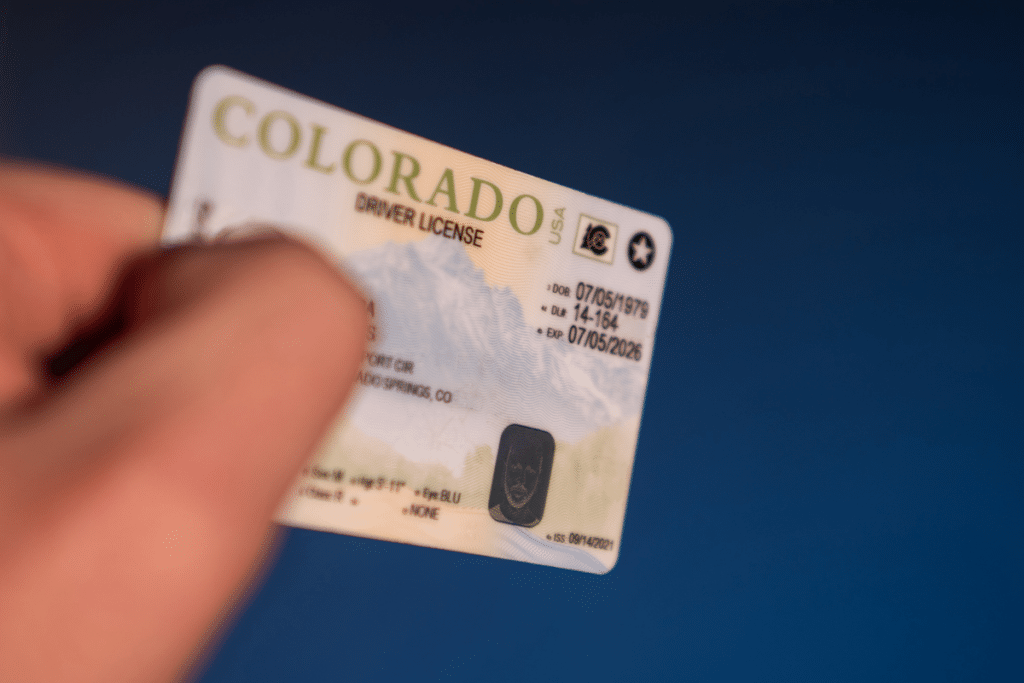
The short answer is yes, for a limited time.
As an American tourist or visitor, you can drive in the UK for up to 12 months using your valid US driver’s license.
However, after this period, you will need to apply for a UK driving license if you plan to stay longer. The process for this is fairly straightforward, but you may have to pass both a theory and practical driving test, depending on your circumstances.
Keep in mind that even if you’re only visiting for a short time, it’s still a good idea to familiarize yourself with the UK’s driving laws and customs, particularly if you plan to drive regularly.
If you’re planning a trip to the UK and want to drive while you’re there, don’t take unnecessary risks.
Prepare yourself for the differences in road rules and make sure you understand the layout, signs, and potential hazards of driving in a foreign country.
Whether you’re taking a short holiday or planning a longer stay, JNDS offers online driving courses to help you feel confident and safe on UK roads. Our experienced instructor, John Nicholson, has worked with numerous drivers from the US and knows exactly how to help you adjust to UK driving laws.
So, is your US driver’s license valid in the UK? Yes, it is — for now.
But with the right preparation, you can ensure that your experience on UK roads is as smooth and safe as possible.
Need more help?
Starting your driving journey is an exciting milestone, but driving test faults can present unexpected hurdles. These faults often make the difference between securing a pass or facing a fail on your test, especially after you’ve put in many dedicated hours of practice.
Your first driving lesson in the UK is a major milestone—exciting but nerve-wracking.
Whether you're 17 or just starting to drive later in life, feeling nervous is completely normal.
But the right preparation can ease those jitters and boost your confidence.
You're probably wondering how to prepare for your first driving lesson in the UK.
Our guide will explain everything you need to know, from what to bring to how to get mentally ready.
We promise that with these tips, your first driving experience will be smooth and productive.
Knowing what happens during your first driving lesson can significantly reduce anxiety.
Typically, your instructor will meet you at a pre-arranged location.

The first part of the lesson often takes place in a quiet residential area or an empty parking lot.
The goal is for you to get comfortable with the car and its basic controls.
Your instructor will explain how to adjust your seat and mirrors and teach you the key car controls:
Don’t expect to be driving on a busy road immediately.
Your first steps will likely be learning how to:
Before stepping into the car, make sure you have everything you need.
This will prevent delays getting on the road and help you feel more prepared.
Here's a checklist of the essentials you should have for your first driving lesson in the UK:
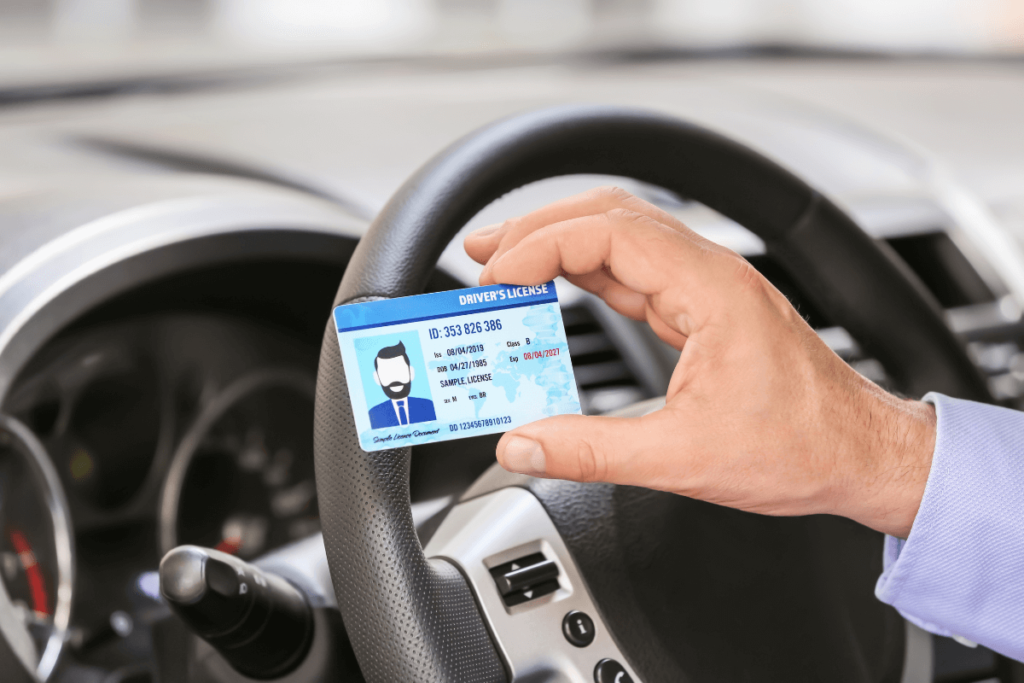
Pay attention to the above closely.
These are the perfect way to know how to prepare for your first driving lesson in the UK.
In our years of teaching driving lessons, we have found these tips to be effective in helping students feel more comfortable driving, especially if it’s their first time behind the wheel.
One of the most important aspects of your first driving lesson is your mental preparation.
It's normal to feel overwhelmed, but there are ways to calm yourself:
While your first driving lesson won’t involve complex road manoeuvres, knowing the UK Highway Code will ease your nerves.
Spend some time reviewing the highway code, especially sections about road signs, markings, and basic rules.
If you took your UK driving theory test some time ago, do not skip this step because you may have forgotten something important.
Understanding these basics before your lesson can help you feel more in control and less overwhelmed when you finally hit the road.
If you need a refresher, I recommend the DVSA Official Highway Code materials.
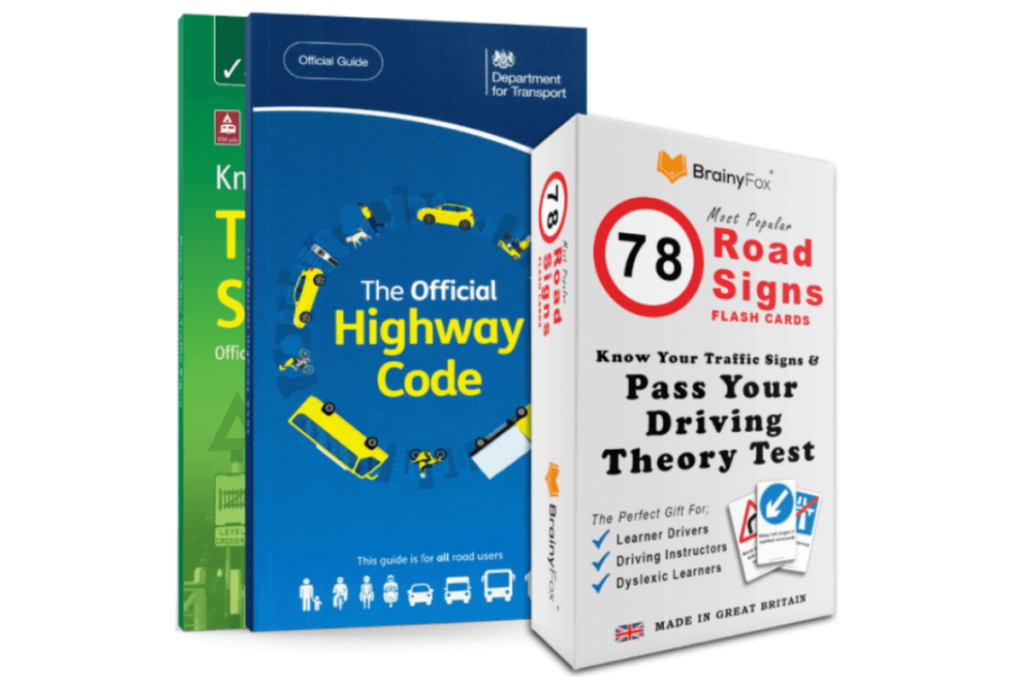
The resource can help you review the highway code with ease, ensuring you’re ready to hit the ground running when you meet your instructor.
Driving involves more than controlling the car—it’s also about being aware of your surroundings.
Before your lesson, spend some time observing how experienced drivers navigate roads.
Watch how they approach:
By noticing the flow of traffic, signals, and road behaviour, you’ll be better prepared to do the same in your own lesson.
You can check out many videos on YouTube to help, and I am working on some videos to include in this blog post later.
If that interests you, join my newsletter below called Road Ready Resources.
You’ll be the first to hear from me when new blog posts and important changes to the highway code are uploaded to my site.
Your brain and body will perform better if they’re well-rested and fuelled.
The night before your lesson, aim for a good night's sleep.
Avoid staying up late worrying—rest will help you stay alert, which is important when driving.
On the day of your lesson, have a light meal an hour or so before you meet your instructor.
It will energize you and help your mind focus.
You want to avoid feeling sluggish, but you also don’t want to be distracted by hunger.
Hydrate well, but go easy on the caffeine—it can make anxiety worse.

Comfort is key when you’re driving.
Your clothes should allow free movement of your arms and legs, especially when operating the pedals.
Avoid tight or bulky clothing that might restrict movement.
Footwear is particularly important—don’t wear shoes with thick soles or high heels, as they can interfere with your control of the pedals.
Choose flat, comfortable shoes with a good grip.
Ladies, I’m sorry, but that means no high heels.
Heels are unsafe when driving because they impede your ability to control the clutch, brake, and gas pedals.
One of the most valuable things you can do is talk openly with your instructor.
Whether you’re feeling anxious or unsure about something, ask questions.
Your instructor is there to guide you, not to judge you.
If you’re unsure about what to expect during the lesson, feel free to ask what the plan is.
Setting clear expectations can help you feel more in control.
Knowing what could arise during your lessons can help you mentally prepare a plan to respond.
Your instructor should be open to giving you an idea of what to expect before meeting them or on the day of your lesson.
Everyone makes mistakes when they’re learning to drive.
We get better at something when we practice.
So don’t stress about making a mistake - your instructor works with hundreds of people each year.
Instructors already know the mistakes you’re going to make because they are the same mistakes all students make.
We’re here to help you learn from those mistakes and keep going.
So keep in mind your instructor is not expecting perfection—they’re there to help you become a confident, safe driver.
So, don’t feel down when you inevitably:
Each mistake helps you get better.
So far, you’ve learned how to prepare before your first driving practical with everyday tips and tricks.
However, if you want more specific guidance, you could consider investing in an online driving course.
That’s because the most effective way to prepare for your first driving lesson is through proper instruction.
Whether you're looking for in-person lessons with a certified professional or prefer the flexibility of an online course, both options are excellent ways to get started.
We offer ADI-certified driving lessons, ensuring that you receive the highest quality instruction from an experienced professional.
We're fully UK qualified and will guide you every step of the way, whether it's your first lesson or you're building on your existing skills.
If you prefer learning at your own pace, my online driving courses are designed to cover everything you need to know before getting behind the wheel.
These courses can help you understand the fundamentals, build your confidence, and give you an edge before you hit the road.
We also offer a range of products in our shop, all carefully selected to enhance your driving experience.
From safety items to driving accessories, we've got everything you need to ensure your driving journey is as smooth and safe as possible.
Preparing for your first driving lesson in the UK can seem like a never-ending list, but with the right mindset and preparation, it can be a rewarding experience.
By understanding what to expect, gathering the essentials, and focusing on mental and physical readiness, you'll feel more confident when you step into the car.
Remember, the best way to get fully prepared is to invest in lessons with a qualified instructor or take an online course tailored to your needs.
Good luck!
We're confident you will nail your first driving lesson in the UK and feel great in the process!
Before you go, let us know in the comments below - do you know how to prepare for your first driving lesson in the UK, or is there something else you would have liked us to include?
